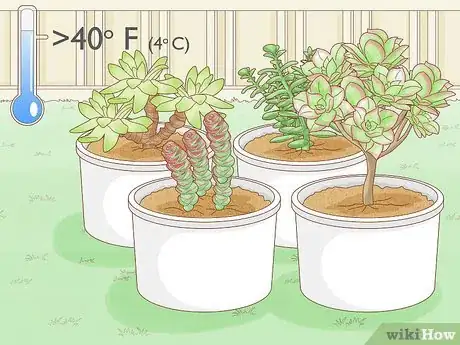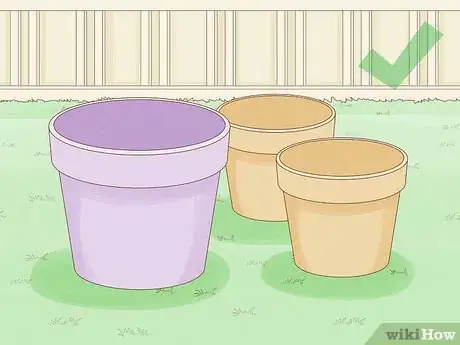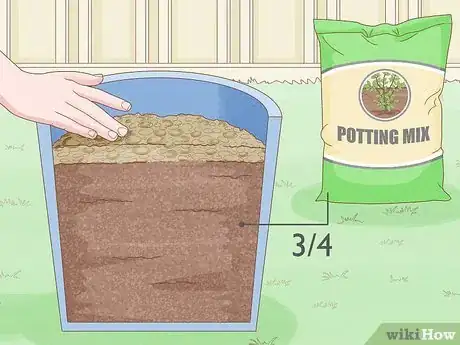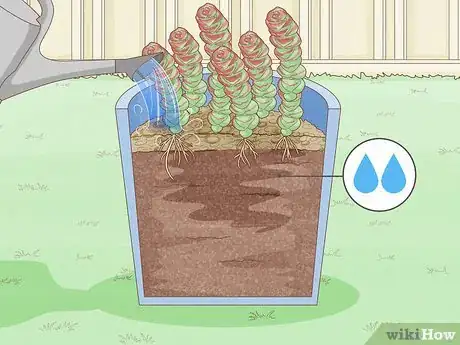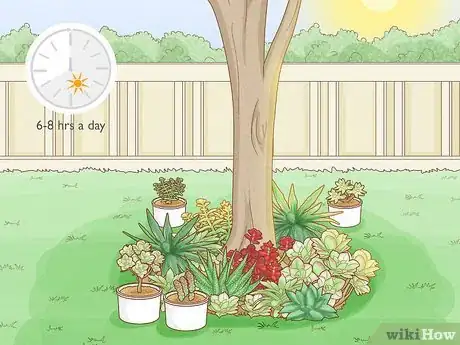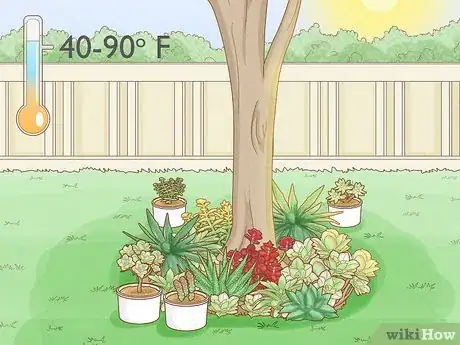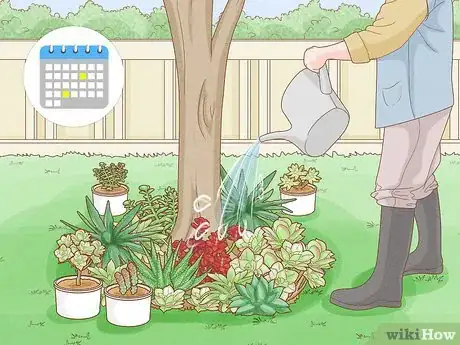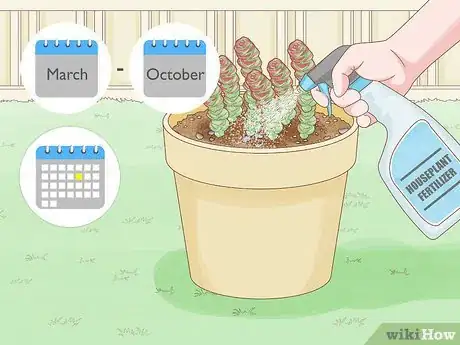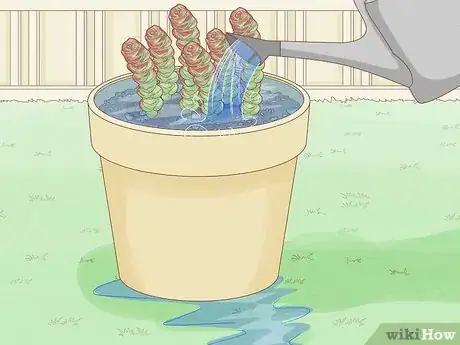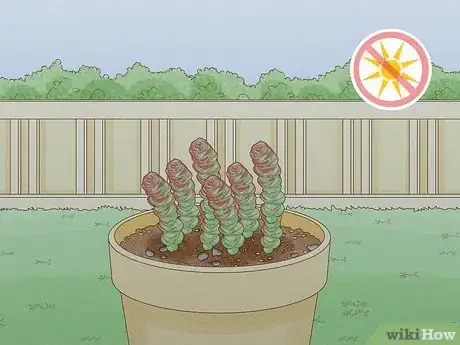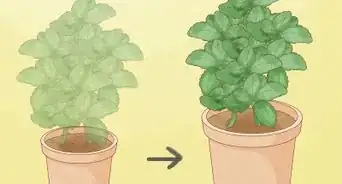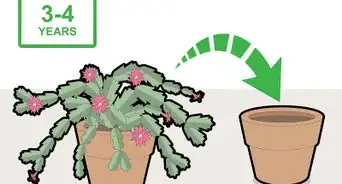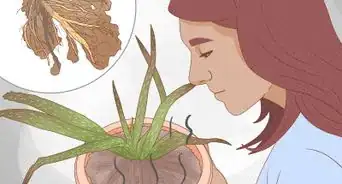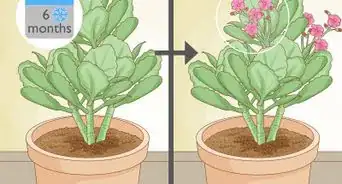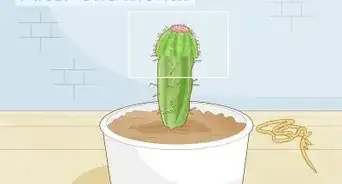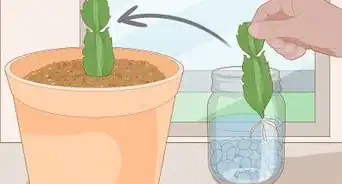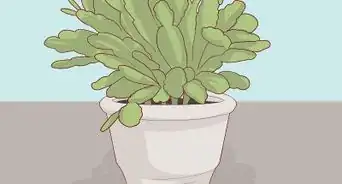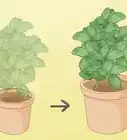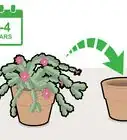This article was co-authored by Chai Saechao and by wikiHow staff writer, Hannah Madden. Chai Saechao is the Founder and Owner of Plant Therapy, an indoor-plant store founded in 2018 based in San Francisco, California. As a self-described plant doctor, he believes in the therapeutic power of plants, hoping to keep sharing his love of plants with anyone willing to listen and learn.
There are 8 references cited in this article, which can be found at the bottom of the page.
This article has been viewed 5,194 times.
If you’re looking for a low-maintenance plant that’s great for ground cover or containers, succulents are the species for you. While the term “succulents” can describe a wide range of plants, their basic needs are usually the same no matter what specific strain they are. Keep reading to see how you can upgrade your landscaping with tons of different colors, shapes, and flower types by planting succulents outdoors.
Steps
Where should I plant my succulents?
-
1Plant them in rock gardens or flower beds for ground cover. Succulents make amazing landscape additions, and they can add a bit of color to a rock garden or rock wall. They’re pretty resilient plants, so they don’t need perfect conditions to flourish.[3]
-
2Plant them in containers if you want to move them around. If you live in a colder climate or you plan on reorganizing your outdoor space, containers are probably a good option for you. Small containers can be lifted and taken inside easily, while large containers are eye-catching and beautiful.[4]
How do you plant succulents in containers?
-
1Fill a shallow container with potting mix and gravel. Purchase a large, shallow container with a drainage hole on the bottom. Pick up a bag of potting mix from your local gardening store and fill up your container about 3/4 of the way full with it. Top it off with some gravel and use your hands to mix it all together.[5]
-
2Add 5 to 6 succulents together in the container. Succulents grow best in a cluster. Gently take the succulents out of their nursery pots and bury the roots in the soil, leaving the base and the leaves exposed. Surround your largest succulent with the smaller ones until the soil is mostly covered.[6]
-
3Give the succulents a good watering. New plantings need to be watered quickly or else they won’t take to the soil. Grab a hose or a watering can and water your succulents until the soil is moist.[7]
What are some common problems that succulents have?
-
1Overwatering. It’s the number one way that succulents die. If the leaves on your succulents get mushy or spongy, hold off on watering them for at least a week until they dry out again.[15]
-
2Lack of sunlight. If your plants aren’t getting enough sun, they’ll start to lose their color and their blooms. If you notice your succulent turn pale or light green, move it to a spot that gets at least 6 hours of sunlight every day.[16]
-
3Mold. This usually means that too much water is getting on the leaves of the succulent. If you notice black or white spots on the leaves of your plant, be sure you’re watering the soil, not the top of the succulents. Avoid using spray bottles to water them, and make sure the soil is completely dry before giving them more.[17]
References
- ↑ https://www.countryliving.com/gardening/a42264/how-to-grow-succulents/
- ↑ https://www.southernliving.com/home-garden/gardens/how-to-plant-succulents?slide=570c9e5b-f749-4185-9f6f-dbeebe4c9150#570c9e5b-f749-4185-9f6f-dbeebe4c9150
- ↑ https://gardeningsolutions.ifas.ufl.edu/plants/ornamentals/succulents.html
- ↑ https://gardeningsolutions.ifas.ufl.edu/plants/ornamentals/succulents.html
- ↑ https://www.southernliving.com/home-garden/gardens/how-to-plant-succulents?slide=570c9e5b-f749-4185-9f6f-dbeebe4c9150#570c9e5b-f749-4185-9f6f-dbeebe4c9150
- ↑ https://www.southernliving.com/home-garden/gardens/how-to-plant-succulents?slide=44964850-6c6d-4168-be4b-3b675de39ba9#44964850-6c6d-4168-be4b-3b675de39ba9
- ↑ https://www.southernliving.com/home-garden/gardens/how-to-plant-succulents?slide=44964850-6c6d-4168-be4b-3b675de39ba9#44964850-6c6d-4168-be4b-3b675de39ba9
- ↑ https://www.gardenersworld.com/plants/best-succulents-to-grow/
- ↑ Chai Saechao. Plant Specialist. Expert Interview. 20 February 2019.
- ↑ https://extension.illinois.edu/blogs/know-how-know-more/2017-12-15-growing-succulents-beyond-basics
- ↑ Chai Saechao. Plant Specialist. Expert Interview. 20 February 2019.
- ↑ https://www.architecturaldigest.com/story/how-to-care-for-succulents
- ↑ Chai Saechao. Plant Specialist. Expert Interview. 20 February 2019.
- ↑ https://extension.illinois.edu/blogs/know-how-know-more/2017-12-15-growing-succulents-beyond-basics
- ↑ https://www.countryliving.com/gardening/a42264/how-to-grow-succulents/
- ↑ https://www.countryliving.com/gardening/a42264/how-to-grow-succulents/
- ↑ https://www.countryliving.com/gardening/a42264/how-to-grow-succulents/
